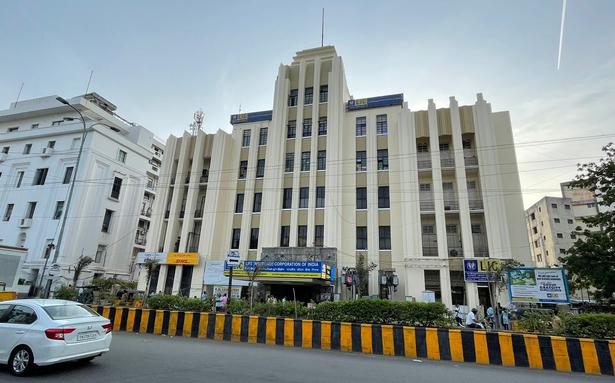[ad_1]
Leading a group of walkers, historian and author V. Sriram narrates the history and heritage of the architecture on different stretches in Chennai
Leading a group of walkers, historian and author V. Sriram narrates the history and heritage of the architecture on different stretches in Chennai
As a group of construction labourers are busy demolishing a building in George Town on a bright Saturday morning, a bunch of walkers arrive there. A more fitting end to a walk, studying various aspects of the halls, facades and landmarks of Art Deco architecture in Chennai, could not have even been planned this well.
Historian and author V. Sriram, an engaging chronicler of the city, was leading the walk that wound up near the demolition site. Earlier, he spoke about the loss of Art Deco architecture in Chennai and captured the major themes of the walk in two hours, the need for conservation of existing Art Deco buildings, the significance of knowing the history of Art Deco— a movement that began in the 1920s in Europe and the U.S., heralding the advent of the modern age—the need for an engaged citizenry and the challenges in tackling problems of town planning during the development of major infrastructure projects.
At the end of the walk, a few metres away from where a construction labourer was loading debris from the demolition into a lorry, parked along the NSC Bose Road, Mr. Sriram said: “Sometimes I think Art Deco is the worst victim of modernisation. It began as modern, it was finished by modernisation. Indo-Saracenic architecture has survived because it is considered to be antique, because those are all big buildings and people will rise in arms. But when a cinema theatre is demolished, we say it is not that old. We are losing an entire art form. The world has woken up. Miami has now been declared as a UNESCO heritage site. Bombay has already got the entire Art Deco corridor along Marine Drive as a heritage site. I think it is in the first state of approval.” Pointing to the demolition of many heritage buildings in Chennai and the failure of the urban planning agencies in conserving Art Deco structures, Mr. Sriram said, “We could have done it. But now it is very late.”
At the Dare House, one of the best Art Deco buildings reconstructed in the 1930s in Parrys Corner, Mr. Sriram explained how the purchase of the particular piece of land in 1788 by Thomas Parry for the construction of Parry and Company led to urban development in the northern part of what is called Parry’s Corner.
“This is probably the most historic business district in the country. There was nothing north of this and the sea came right up to the entrance. Because nobody went further in 1788, this was land’s end as far as the city was concerned. Now it has lost it’s meaning. But the term paarimunai still stands,” he said, adding: “When Parry and Company made a success out of coming over here, the Collectorate moved, the Commissionerate of Customs moved, all the business houses began to move and they built in the classical style. Later they built in the Indo-Saracenic style in the 1860s. It was exclusively meant to display the British might and to show the natives that a new architectural idiom was coming into the country with elements of Gothic, Islamic and Hindu architecture, being brought together into a unique amalgam.”
In the early 20th Century, Art Deco buildings became a sign of protest against the British by swadeshi business leaders. “They all invested in Art Deco. Art Deco became their protest, to show they were equally capable of building massive structures,” he said.
As the group of walkers stepped out of Dare House and walked past other heritage buildings near the Madras High Court, Mr. Sriram narrated the history and heritage of Art Deco architecture on several stretches, including the Oriental Buildings, Catholic Centre, Chennai House, Tamil Isai Sangam and Ebrahim Currim and Sons. Pointing to the curved verandahs in Ebrahim Currim and Sons near Flower Bazar Police Station, Mr. Sriram said the curved verandahs were some of the prominent aspects that Chennai residents recognise as Art Deco. “Many of us grew up in households like these. Look at those thin pillars holding up the verandahs. On the top again, it is almost like the round deck of a ship,” said Mr. Sriram.
When a few walkers raised questions on heritage conservation during the metro rail construction and the role of NGOs in it, Mr. Sriram explained how a few NGOs played a successful role in conservation of heritage buildings along the Metro Rail Corridor in areas such as George Town. He said a few NGOs refused to “give up” and demanded the development of structures for metro rail without affecting the heritage value of the existing old buildings.
Standing on the footpath near Flower Bazar Police Station, he pointed to the loss of good heritage buildings, including the old police station building that was demolished and reconstructed 10 years ago, due to poor maintenance by the government.
[ad_2]
Source link
